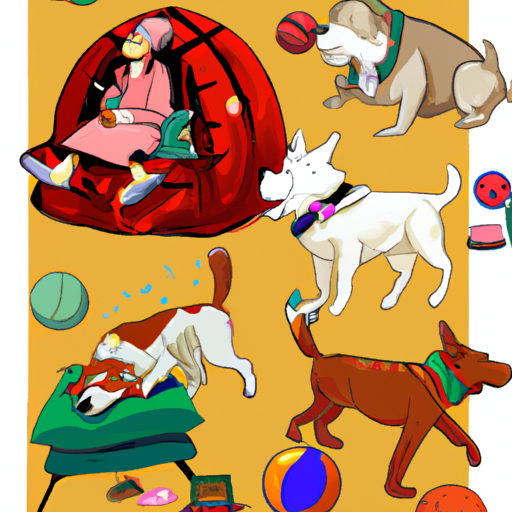As a caregiver, you might often find yourself wondering what your furry friend spends their time doing. Well, we’ve got the insights you’ve been waiting for. Here’s an in-depth examination of the worlds our dogs live in, and the ways they interact with it.
Understanding Your Dog’s Behavior
When you’re taking care of a dog, understanding their behavior is crucial. Dogs express their needs and emotions through their actions.
- Playfulness: Dogs love to play. Whether it’s tugging on a rope or chasing their tail, these actions keep them engaged and happy.
- Eating and Drinking: Dogs need a balanced diet to stay healthy. They also need access to fresh water at all times.
- Curiosity: Dogs are naturally curious. If they are interested in something, they will sniff, paw, and explore it.
While these are some of the common behaviors, dogs are unique individuals. They have their own personalities and quirks, which can lead to varying behavior.
How Dogs Communicate
Dogs use a variety of ways to communicate with us and with each other.
- Body Language: Dogs express a lot through their body language. For example, a wagging tail can mean they’re happy, while ears pinned back might signify fear.
- Vocalizations: Barking, growling, whining, and howling are all ways dogs vocalize their feelings.
- Physical Contact: Dogs often use physical contact to communicate, such as pawing for attention or leaning against you for comfort.
A Day in the Life of a Dog
Curious about what a typical day might look like for your canine companion? Here’s a general breakdown:
| Time | Activity |
|---|---|
| Morning | Wake up, Morning walk, Breakfast |
| Mid-Morning | Playtime, Training |
| Afternoon | Nap, Lunch |
| Evening | Evening walk, Dinner |
| Night | Sleep |
Remember, the schedule can vary based on the dog’s age, health, and personal preference.
Caring for Your Dog’s Needs
As a caregiver, it’s vital to ensure your dog’s needs are met. This includes:
- Providing a balanced diet
- Ensuring regular exercise and playtime
- Offering socialization opportunities
- Giving them regular veterinary checkups
- Providing mental stimulation
Frequently Asked Questions
Here are some commonly asked questions about dogs and their behaviors:
Q: Why does my dog eat grass?
A: Dogs might eat grass due to boredom, to induce vomiting, or because they like the taste.
Q: Why does my dog bark at other dogs?
A: It could be due to excitement, fear, or territorial behavior.
Q: Why does my dog follow me everywhere?
A: Dogs are pack animals and see their owners as part of their pack. Following you around is a way to stay connected.
Q: Why does my dog wag its tail?
A: Generally, dogs wag their tails when they’re happy or excited. However, it can also signal stress or fear.
Each dog is unique in their behavior and needs. Understanding your dog can lead to a more fulfilling relationship for both of you.



